LOUDSPEAKERS
Check the impedance of your speakers. You can use types with an impedance of between 4 and 8 Ohms.
The red coloured speaker terminals are positive (+) and the black speaker terminals are negative (-). Make sure the correct polarity is maintained at each speaker connector or the sound can become weak and “phasey” with little bass.
USING BARE WIRE CONNECTIONS
Prepare the speaker cords for connection by stripping off approximately 10mm (3/8”) or less of the outer insulation. More than 10mm could cause a short circuit. Twist the wires tightly together so there are no loose ends. Unscrew the speaker terminal, insert the speaker cable, tighten the terminal and secure the cable.
Note: All connections are made using standard loudspeaker cable.
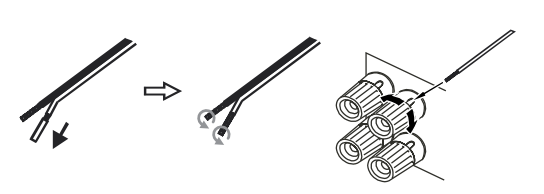
USING BANANA PLUGS
We recommend using Banana plugs with our units to establish a secure connection and ensure there are no loose strands of wire that may cause unwanted noise or interference.
Once you have stripped the outer insulation of the cable and twisted the wires as indicated below, securely connect these to your banana plugs and push the plug in as far as possible without applying excessive force.
Note: When using a banana plug, make sure the speaker terminals are completely tightened before inserting the plug.
BASIC CONNECTIONS
The diagram below shows the basic connection of the EDGE A to a CD player using the D3 coaxial digital input source and a pair of loudspeakers.

PRE OUT CONNECTIONS
The Pre Out can be connected to the inputs of a power amplifier or active subwoofer.
Subwoofer:
Although the EDGE A does not contain a dedicated subwoofer output, you can connect a subwoofer by connecting either of the unbalanced RCA Pre-Outputs to the corresponding inputs on the rear of your powered sub.
The sub’s audio level will then follow the volume commands of the EDGE to ensure the volume increases/decreases in sync.
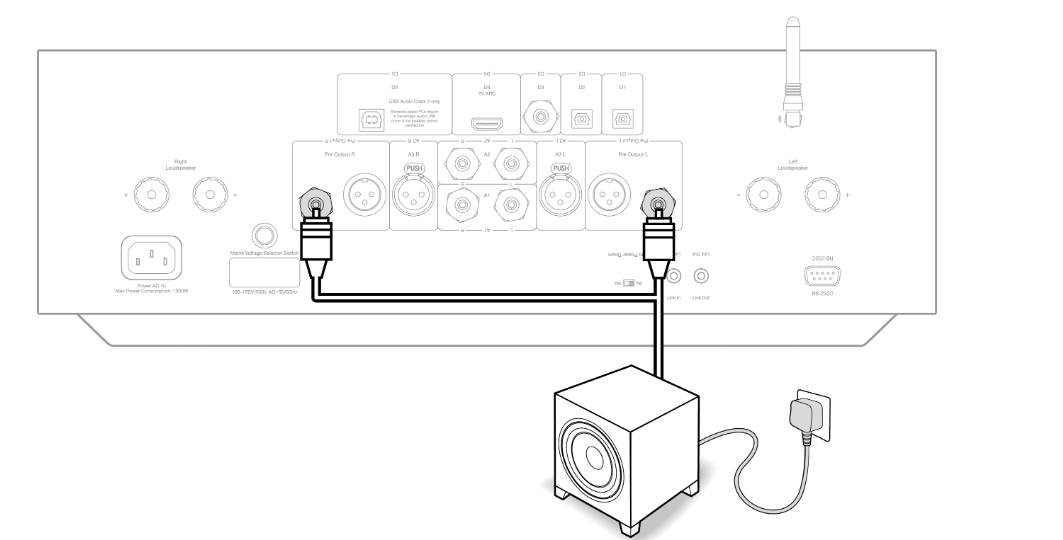
Power amplifier:
To connect the EDGE A to a power amp, such as the EDGE W, you will need to run either unbalanced RCA cables or balanced XLR cables from the Pre Outs to the input on the power amp.
With this setup, you will be using the EDGE A as a dedicated Preamplifier.
Unbalanced:
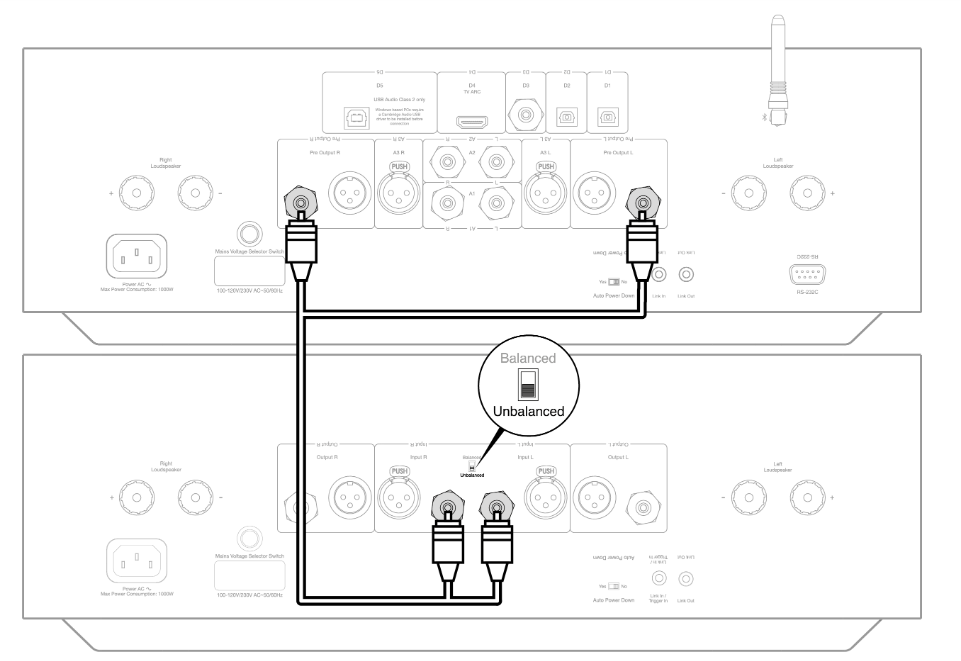
Balanced:
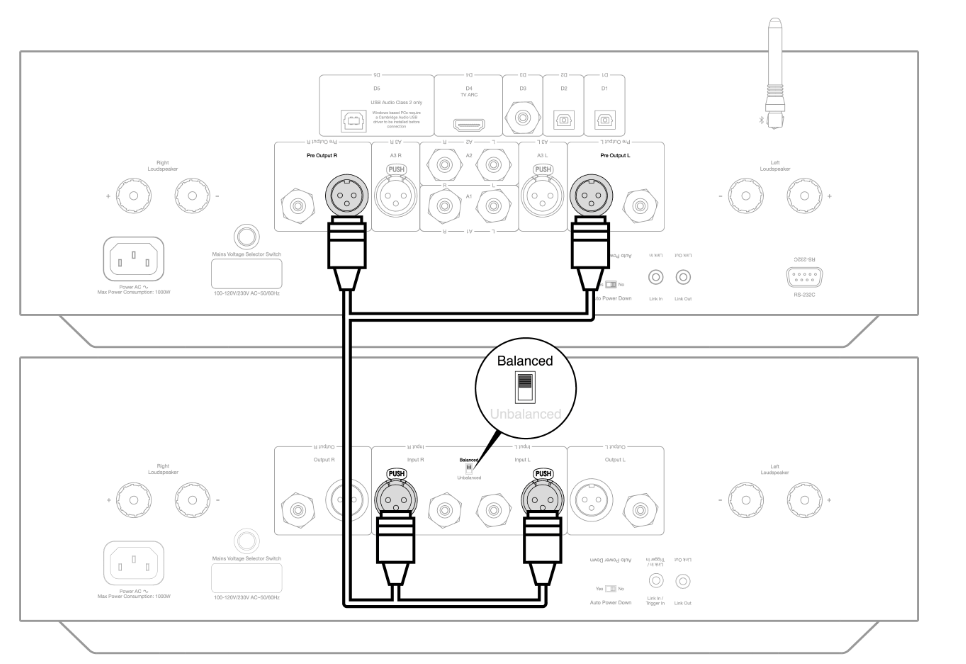
BALANCED AUDIO CONNECTIONS
Balanced connections in an audio system are designed to reject electrical noise, from power wiring etc, and also the effects of noise currents flowing through ground connections. The basic principle of balanced interconnection is to get the signal you want by subtraction, using a three wire connection. One signal wire (the hot or in-phase) carries the normal signal, while other (the cold or phase-inverted) carries an inverted version. The balanced input senses the difference between the two lines to give the wanted signal. Any noise voltages that appear identically on both lines (these are called common-mode signals) are cancelled by the subtraction.
The EDGE A is designed to work at its highest performance when a balanced interconnect is used.

Note: Ensure that the A3 input has been selected via the source selector dial on the front panel or the source selector buttons on the remote.
There will be no audio from the EDGE if the correct input hasn’t been selected.
CONNECTING A TV
The EDGE A has an HDMI ARC (Audio Return Channel) input to allow you to create a connection to a TV that supports ARC function.
The TV ARC input is labelled as D4 on the front panel source selector.
Note: As the EDGE A is only able to decode a stereo PCM signal, you will need to ensure the audio output of your TV/App/Box’s settings are configured to PCM/Stereo. If you are unsure of how to amend your settings, please consult your TV/Box’s manufacturer.
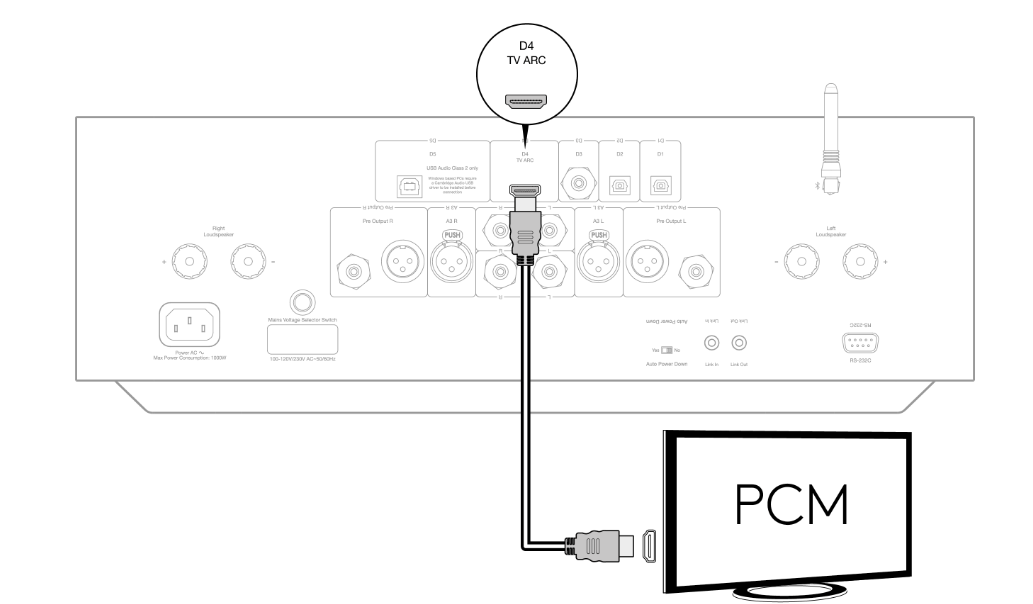
Some Connected TVs will send an inconsistent sample rate to the EDGE A, that the DAC inside the amplifier is unable to process. This can result in audio dropouts and glitches.
The issue seems to be mainly related to newer LG and Samsung televisions (QLED and OLED models in particular), but there have also been reports of TCL televisions experiencing the same issue.
We have now developed a fix for this issue, which permits the use of TV's experiencing this issue with the ARC input (D4) on the Edge A.
If you are experiencing this issue with audio dropouts and glitches, please contact us at https://www.cambridgeaudio.com/gbr/en/contact and we will be able to provide you with instructions on how to perform this update.
Please note that this fix is for the ARC input only, and not TOSLINK inputs on the unit.